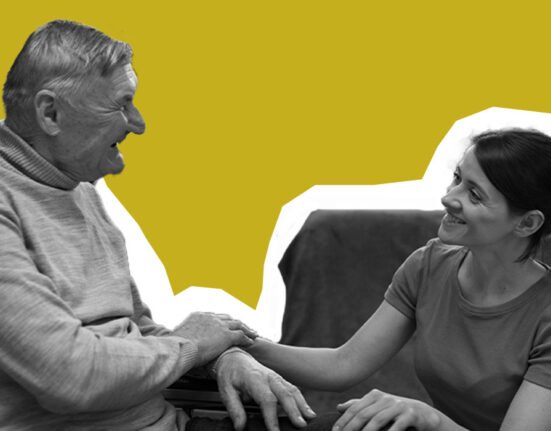‘X’, a 23-year-old student, always felt out of place. As a child, she struggled to make eye contact, was sensitive to sounds and found comfort in routines. Yet, at the same time, her teacher often described her as distracted, impulsive and forgetful. For years, she was told she was” just anxious” or “ not trying hard enough.” It wasn’t until adulthood that she discovered her experiences aligned with both Autism Spectrum Disorder (ASD) and Attention Deficit/ Hyperactivity Disorder (ADHD); a combination of new conditions commonly referred to as AuDHD.
Imagine navigating life with a mind that constantly shifts between needing structure and craving spontaneity. One moment you’re hyper-focused on a task, and the next you’re overwhelmed by the sound of a ticking clock. For many individuals, this is not just a quirky personality trait; it’s a lived experience of AuDHD. This article explores the signs, symptoms and potential causes of AuDHD, shedding light on why understanding this intersection is essential for diagnosis, support and embracing neurodiversity.
Why the term AuDHD?
AuDHD is a community coined shorthand for individuals who live with both traits of Autism Spectrum Disorder and Attention Deficit Hyperactivity Disorder. Although it is not yet an official diagnosis in the DSM-5, research shows substantial overlap between these neurodevelopmental conditions; about 40% of people with autism may meet criteria for ADHD and vice versa. (WebMD, 2025; Healthline, 2024) [1]
Because the combined traits create a complex profile of strengths and challenges, many adults and children identify with AuDHD to describe their lived reality of dual neurodivergence.
Read More: When ADHD Goes Undiagnosed in Adulthood
Core Signs and Symptoms
AuDHD involves traits that can be seen in both autism and ADHD, but this combination often creates its own patterns.
1. Executive Function and Attention Differences
- Struggling to begin or finish tasks, even those one cares deeply about (WebMD, 2025). [1]
- Frequent procrastination, distractibility, switching interests often or getting “stuck” on a hyper-focused interest (LondonPsychiatry Clinic, 2025).
- Poor time management, Misplacing items, difficulty in organising & planning their daily life. [3].
2. Social Interaction and Daily Communication
- Difficulty with even small talk, reading social perception, establishing and sustaining conversations. (WebMD, 2025) [1]
- Risk of masking– efforts to “fit in” by mimicking social behaviour, which may lead to exhaustion and later breakdown. (Talkspace,2024) [4]
Read More: Importance of Social Interaction in Early Childhood Development
3. Sensory Processing & Overload
- Hyposensitivity or Hypersensitivity to light, sound, texture, smell; easily overwhelmed in busy settings ( TopDoctors, 2025) [5]
- Experience of “meltdown” or Shutdown when sensory thresholds are exceeded; paradoxical need for both stimulation and calm. [2]
4. Impulsivity, Activity & Hyper focus
- Restlessness, fidgeting, internal or external & hyperactivity; sudden surges of intense focus ( hyperfocus) on an interest or task (Healthline, 2024). ]6]
- Impulsive decision-making, interrupting others, and difficulty sitting still (Talkspace, 2024). [4]
Read More: Flow States Vs. Hyperfocus: How ADHD Challenges Traditional Motivation Theories
5. Emotional Regulation
- Strong emotional responses like intense sadness, frustration and anger, and difficulty in calming down. (FocusBear, 2024) [7]
- Easily drained by socialising (even if enjoyable), needing long recovery periods(“Social Battery” motivation) (Daily Express, 2025). [8]
Unique Challenges of Dual Neurodivergence
Living with both autism and ADHD features creates interactions that go beyond either diagnosis alone:
- A person may crave novelty (ADHD) yet simultaneously need routine and predictability (Autism) (Geisinger Wellness, 2025) [9]
- Difficulty switching tasks – hyper focus keeps one engaged, but distractibility pulls one away.
- The combination of sensory overload and executive dysfunction can lead to stress, anxiety and burnout more quickly than single condition cases (Moneycontrol, 2025) [10]
- Because traditional screening tools were designed for separate autism or ADHD are often late diagnosed, especially in adults and women. (WebMD, 2025) [1]
Causes of ADHD
1. Neurodevelopmental Roots
Both ADHD and Autism are considered neurodevelopmental conditions, meaning brain structure/ Function differences start in early childhood ( Geinsinger Welness, 2025). [9] Genetic factors play a major role. For example:
- A family history of autism or ADHD increases the likelihood. (WebMD, 2025) [1]
- Brain Imaging studies find differences in networks tied to social cognition, executive function, and sensory processing. (Healthline,2024) [6]
Read More: Inside the ADHD Brain: A Neuroscientific Perspective
2. Environmental and Early Life Functions
Several non-genetic contributors can increase risk; however, they do not cause ADHD on their own:
- Premature Birth, Low birth weight, Prenatal exposures to toxins.
- Early sensory deprivation or trauma may exacerbate executive or sensory processing difficulties.
It’s not caused by poor parenting or lifestyle. It is brain brain-based difference, not a moral failing.
Why are so many Undiagnosed or Misdiagnosed
AuDHD often flies under the radar; some reasons are:
- Historically, ASD and ADHD were seen as separate, until the 2013 edition of DSM-5, simultaneous diagnosis was discouraged. (Geisinger Wellson, 2025) [9]
- Diagnostic criteria were biased toward male presentations (hyperactivity in boys), so girls and adults may “mask” symptoms. (London Psychiatry Clinic, 2025) [2]
- Overlapping traits make diagnosis complex; fatigue, sensory issues, and executive dysfunction might be mislabeled as anxiety, depression or simply “quirky”. (Talkspace, 2024) [4]
Strengths, not just Challenges
It’s vital to emphasise that neurodivergence, like AuDHD brings strengths rather than just challenges:
- Intense focus and passion on special interests (hyper focus) can lead to expertise and innovation.
- High sensitivity often correlates with creativity, empathy and awareness.
- Dual traits may enable flexibility, switching between modes of thinking and adapting to many situations.
Embracing neurodiversity means recognising these advantages alongside the support needs.
Support and Interventions
Since AuDHD isn’t an official unified diagnosis, treatment mirrors best practices for autism and ADHD, tailored individually.
1. Assessment & Diagnosis
- Seek a clinician experienced in both ADHD and Autism (WebMD,2025) [1]
- Standardised screening tools may include the adult ADHD self-report scale (ASRS ) and Autism Quotients (AQ, RAADS-R). WebMD, 2025)
2. Therapy and interventions
- Cognitive Behavioural Therapy (CBT) can be used for executive functioning, emotional regulation. (Geisinger Wellness, 2025) [9]
- Occupational Therapy/ Sensory Integration: For sensory sensitivities and task-initiation challenges.
- Social Skill Training: These could help with interpreting social signals, alleviating mask exhaustion, and improving communication skills.
3. Treatment & daily routine
- Medications that are used for ADHD, like stimulants and non-stimulants, may help with attention and impulsivity-related issues, and autism traits may require customised approaches. (WebMD, 2025) [1]
- Regular routines, sensory accommodations (quiet spaces, consistent schedule) and self-care are essential.
4. Environment & Self-Accommodations
- Use visual timetables, timers and alarms to support organising and commencement. Create sensory-friendly spaces, regulate stimulation levels like soundproof headphones, soft textured clothes.
- Precedence their hobbies and talent because arranging work or hobbies with enthusiasm often improves their motivation and functioning.
Awareness & Advocacy
Awareness of ADHD is growing, especially through online and neurodivergent -led communities. Understanding one’s brain style can relieve shame, reduce masking and support better self-advocacy. (Daily Express, 2025) Advocacy also means pushing for better training in clinicians to recognise overlapping traits and remove outdated biases in diagnosis.
Conclusion
Living with AuDHD means navigating a mind that oscillates between ” too much” and “not enough”: a sense of being caught between two neurodivergent styles, but also means living with a brain wired for intensity, perception and passion. Although AuDHD is not a formal diagnosis yet, recognising the overlap of autism and ADHD features can unlock clarity, better support and self-compassion.
The causes lie in neurodevelopment, genetics and environment; not in weakness or parenting. With the right tools, understanding and environment, individuals with AuDHD can harness their strengths and manage their challenges. Rather than framing AuDHD solely as a deficit, we must view it as a neurodivergent style, one that offers unique gifts and demands unique accommodations. When the world adapts the environment and tools to suit this brain style, individuals don’t just cope, but they thrive.
References +
Geisinger. (2025, October 8). What Is AuDHD? Retrieved from https://www.geisinger.org/health-and-wellness/wellness-articles/2025/10/08/14/30/what-is-audhd
Healthline. (2024, November 1). Understanding AuDHD and How It Can Present. Retrieved from https://www.healthline.com/health/autism/audhd
London Psychiatry Clinic. (2025). AuDHD explained. Retrieved from https://www.londonpsychiatry.clinic/blog/audhd-explained
Talkspace. (2024). AuDHD: The comorbidity of ADHD & autism. Retrieved from https://www.talkspace.com/mental-health/conditions/articles/audhd
TopDoctors. (2025). What Is AuDHD? Retrieved from https://www.topdoctors.co.uk/medical-articles/what-is-audhd
WebMD. (2025, April 7). AuDHD (Autism + ADHD). Retrieved from https://www.webmd.com/add-adhd/audhd
Daily Express. (2025). A woman with AuDHD on the eight signs to suggest you have the condition. Daily Express. Retrieved from https://www.the-express.com/news/health/178122/woman-audhd-explains-eight-clear-signs-suggest-you-have-condition
American Psychiatric Association. (2013). Diagnostic and statistical manual of mental disorders (5th ed.). https://doi.org/10.1176/appi.books.9780890425596
Antshel, K. M., Zhang-James, Y., & Faraone, S. V. (2013). The comorbidity of ADHD and autism spectrum disorder. Expert Review of Neurotherapeutics, 13(10), 1117–1128. https://doi.org/10.1586/14737175.2013.840417
Leitner, Y. (2014). The co-occurrence of autism and attention deficit hyperactivity disorder in children – what do we know? Frontiers in Human Neuroscience, 8, 268. https://doi.org/10.3389/fnhum.2014.00268
Craig, F., Margari, F., Legrottaglie, A. R., Palumbi, R., de Giambattista, C., & Margari, L. (2015). Overlap between autism spectrum disorders and attention deficit hyperactivity disorder: Searching for distinctive/common clinical features. Autism Research, 8(3), 328–337. https://doi.org/10.1002/aur.1449













Leave feedback about this